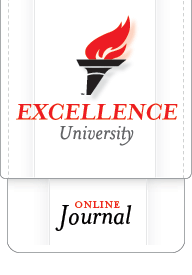Promoting Education Excellence: H2O for Education’s Primary Objectives and Values
March 17th, 2015
I was recently asked about the objectives and values of the “H2O” (or, Help to Ourselves/Others) educational approach. Here are some of the primary objectives of the H2O for Education approach (Part I) and the values represented by the objectives (Part II):
Part I: Primary Objectives of the H2O Educational Approach
Promote “Education Excellence.” The major objective of the H2O approach is the promotion of “education excellence” (or, education that results in an increased ability to live one’s personal and professional visions in life in high-quality ways). For more specifics on how it does so, see Part II below (comments on the values of the H2O approach).
Facilitate the Development of the Whole Person and Entire Community. The H2O approach emphasizes the pursuit of excellence in three areas: (a) self-mastery, (b) interpersonal expertise, and (c) mission connection. The H2O approach focuses on the pursuit of intellectual, physical, and emotional health, which includes the liberation of the mind from ignorance through a commitment to a life-long pursuit of wisdom (including the cultivation of interest, curiosity, and exploration, along with a commitment to the pursuit of validity through the minimization of logical fallacies). For more on how this objective relates to the whole person and the entire community, see Part II below.
Inspire Others to Pursue Education Excellence. The H2O approach emphasizes the development of “learning communities” that focus on the development of relationships that facilitate one’s mental, physical, and emotional health and awareness of how important a healthy individual can be to the health and well-being of others. See Part II below for more specifics on how the H2O approach aligns with this objective.
Part II: The Values of the H2O Educational Approach
The H2O approach (featuring “WATER” and “STEAM”) moves toward the objectives listed above by supporting values that are important to the health and well-being of the individual and the community. Here are a few specifics on how the H2O approach aligns with each of these values, along with more information on what the acronyms WATER and STEAM represent:
Empathic Understanding/Support. This value relates to both the “T” (team-building) in WATER and the “S” (social support) in STEAM. In the H2O paradigm, classrooms are conceptualized as “learning teams” that give and receive effective social support. The H2O approach emphasizes the ability to be mindful of the needs of others in order to cultivate the empathy and deep respect necessary for high-quality teamwork. To view a short article on this value, click here.
Mindfulness/Awareness. Mindfulness and openness to experience is rewarding (the “R” in WATER) in so many ways, including more enjoyment (the “E” in STEAM) of life and an increased ability to learn and grow. The H2O approach emphasizes learning that results in an enhanced ability to live one’s values, which can enhance subjective well-being. For more on this value, click here.
Interpersonal Stability. Lasting relationships that facilitate the pursuit of wisdom and powerful growth is related to quality execution (the “E” in WATER) of activities that cultivate both interpersonal expertise and education excellence. In the H2O model, people are encouraged to consider the reward (the “R” in WATER) of such execution, which often results in more motivation (the “M” in STEAM) for perseverance toward these goals for a lifetime. For more on how to cultivate stable relationships by utilizing honesty (rather than manipulation and control), click here.
Wisdom-inducing Habits. The acronym STEAM comes from research into what it takes to form habits (e.g., the habit of seeking wisdom and valid information). Because habit change is facilitated by social support, time perception, enjoyment, accessibility, and motivation (and because high-quality execution – the “E” in WATER – depends upon good habits), STEAM is a central focus of the H2O approach. For more on how the H2O approach cultivates good habits, click here.
Methodological Integrity. In order to pursue wisdom and validity, one must be clear on methods that decrease threats to validity and minimize logical fallacies (and methods that do not). In other words, methods must be “well-defined” (the “W” in WATER) and “aligned” (the “A” in WATER) with best educational practices. Both of these key components to high-quality execution (the “E” in WATER) are emphasized in the H2O approach. For a short article on well-defined goals (which help facilitate integrity to appropriate methodologies), click here.
Focus. As mentioned above, STEAM focuses on helping people to change bad habits. The habitual focus on what matters most is a major objective of the H2O approach. For more on how the H2O approach encourages people to focus on what matters most, and how this can enhance meaning and purpose, click here.
Rational Humility. The H2O approach emphasizes a clear awareness of one’s strengths and weaknesses in many ways, including how one spends one’s time (the “T” in STEAM) via an exercise called the “Critical Activities Analysis (CAA).” In the CAA, people are asked to clarify their primary objectives in life, then analyze the degree to which they are spending time in ways that promote these objectives. Very often, people find that they have weaknesses in this area; weaknesses that, when addressed, lead to increased time perception for the things that matter most to them. For more on how the H2O approach emphasizes rational humility (and its positive impact on self-esteem), click here.
Meaning and Beauty. Meaning and beauty are common themes when reward (the “R” in WATER) and enjoyment (the “E” in STEAM) are discussed. Many respond to discussions on these topics with a decision to spend more time creatively and/or exploring the purpose of their lives. The H2O approach includes activities that help people assess how they spend their leisure time; results of these discussions often include decisions to decrease time spent in less important activities (e.g., mindlessly surfing the web or the television, complaining without action, mindless gossiping) in order to spend more time in creative and/or contemplative activities. For a short article on using leisure time in more satisfying ways, click here.
Respect/Positive Regard. Social support (the “S” in STEAM) for and enjoyment (the “E” in STEAM) of others includes welcoming ideas different from our own (something that is difficult for many – even those who goal-set to do so and understand the value to being able to hear different viewpoints). People have reported appreciating others more (and even renewing their faith in humanity as a whole) after experiencing the H2O educational approach. The emphasis on honest, respectful, empathic (HRE) communication is often cited as being helpful to the cultivation of respect toward others. For more on how the H2O approach facilitates positive regard, click here.
Community. Community is emphasized in the H2O approach in a variety of ways. As mentioned above, team-building (the “T” in WATER) and social support (the “S” in STEAM) are pillars of the H2O paradigm. Because handling conflict effectively is an essential component of community-building, conflict resolution is emphasized in the H2O approach. For a short article on this topic, click here.
For a list of some of the resources used to develop the H2O for Education approach, click here. For more on the components of H2O for Education and how you can use them to facilitate learning in individuals and/or groups of all kinds, click here.
Article Filed under: IV. Miscelaneous



1 Comment Add your own
1. Adriana Perez | February 23rd, 2018 at 10:33 am
One of Albert Bandura’s most developed concepts is that of self-efficacy, which according to his “Social Foundations of Thought and Action: A Social Cognitive Theory”, is defined as the ability of individuals to gain confidence in themselves and achieve the results they seek. While working through the H2O STEAM packet,the concepts mentioned and discussed are meant to help the individual gain a better lifestyle. Through these steps, individuals are able to work through time management skills, able to learn from their relationships, how to better interact with others, how to create a healthier lifestyle and how to better understand a balance in their lives that will lead to better results. It is through focus, as aforementioned, and leaving bad habits and distractions behind, that individuals are able to accomplish their goals and gain confidence, leading to a higher level of self-efficacy. It is through the steps in the STEAM manual that the individual learns more about themselves and how to overcome obstacles, while also gaining perspective from others, leading to a better self and community.
Trackback this post | Subscribe to comments RSS Feed
Leave a Comment
Some HTML allowed:
<a href="" title=""> <abbr title=""> <acronym title=""> <b> <blockquote cite=""> <cite> <code> <del datetime=""> <em> <i> <q cite=""> <s> <strike> <strong>